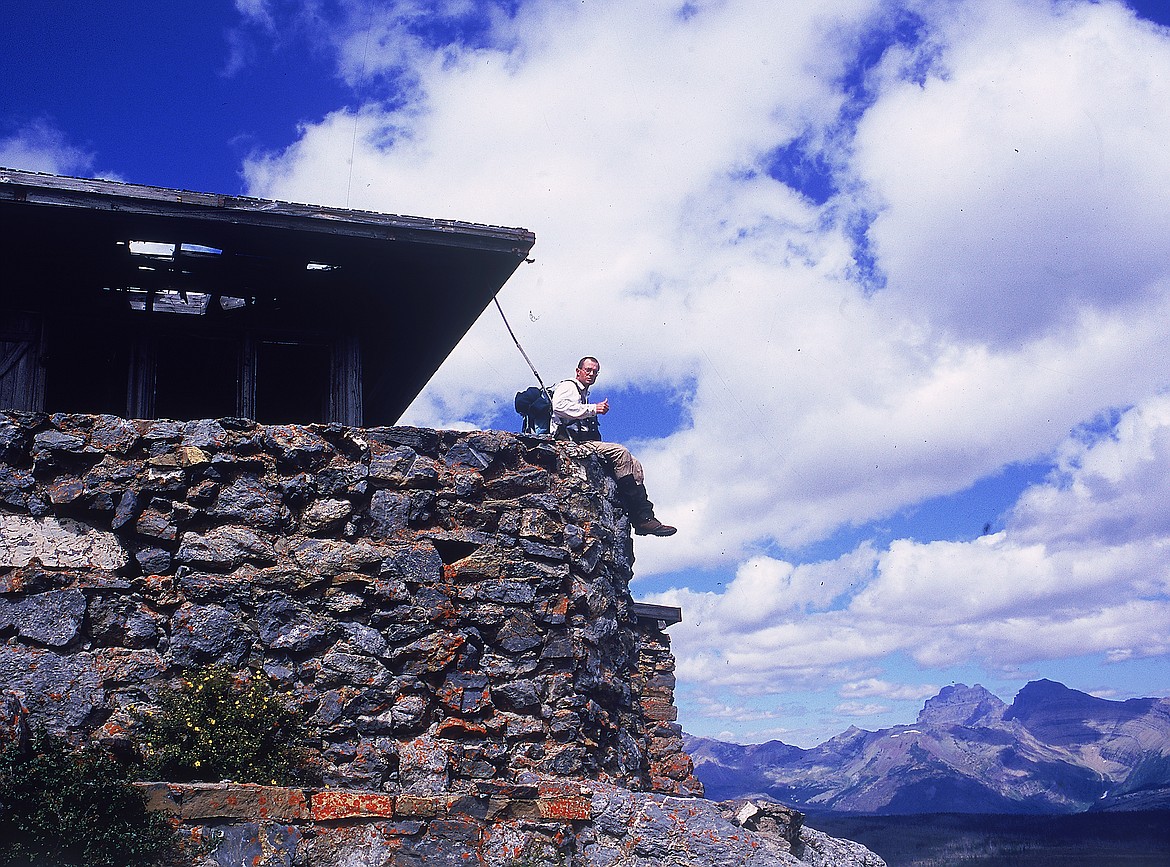Polzin spent decades restoring backcountry cabins in Glacier Park
If you’ve ever hiked to one of Glacier’s remote backcountry patrol cabins or one of its lookouts, you’ve seen the restoration work of Jack Polzin and his crew over the years.
Polzin retired last month after 50 summers and 49 years with the National Park Service, having been granted the Superior Service Award from the Department of the Interior.
Polzin was born in Forsyth and grew up in Columbia Falls. His father, Vernon, was a gifted finish carpenter and owned Gamble’s Hardware store in downtown. Polzin graduated from Columbia Falls High School in 1967 and was working green chain at Plum Creek on summer break from college when his brother Jerry, who was working in Glacier National Park at the time, told him about an opening as a lookout at Garry Lookout. Garry is long gone, but its remains still sit on a hill up the Middle Fork a few miles east of Nyack.
In his rookie summer at Garry, he recalled a strange “fire” he spotted down on the Middle Fork where the plume seemed to be moving down river. He called up longtime lookout Leonard Stutsman who was at Loneman Lookout, which is west of Garry, inside the Park.
Stutsman spotted the smoke, too.
“Jack,” Stutsman said. “You’ve spotted the train.”
Polzin would spend several years as a lookout, moving from Garry to Scalplock Lookout and then in the mid 1970s he became a trails crew leader, where he put his carpentry skills to use where Polzin and his crew built suspension bridges over Ole and Mineral Creeks.
On the home front, he was busy building his own house in Coram from logs cut down from the surrounding spread. The first house was an 8-by-12-foot shack, he said, but later, he built a two-story house and a two-story barn. Polzin has since moved, but the homes and the barn and even the shack stand today.
After more than 20 years working in trails as a supervisor, Polzin was promoted as a maintenance mechanic supervisor for the rehabilitation of Granite Park and Sperry chalets in 1995, as the Park Service was in the process of restoring the structures so they could reopen to the public.
He said he became interested in restoration work because the trail crews would support the packing of supplies up to the chalets. He’d already been building homes in the offseason for decades, so he more than knew his way around the construction and carpentry field.
Over the years, Polzin and his crew worked on restoring historic backcountry structures throughout Glacier. One of his favorites was the remote Heaven’s Peak Lookout, a multi-year project to a lookout that no longer had a formal trail to it — the original trail had been abandoned years before.
Polzin consulted with Mennonite Daniel Heddings on the project — Heddings was one of the original conscientious objectors that built the lookout in 1945 as World War II was ongoing. It was a logistically challenging project, not to mention just determining the best route to get to the lookout, which is guarded by thick brush and cliffs as it clings to the north flank of Heaven’s Peak.
Another favorite was the Matejka Cabin up the North Fork, where he worked closely with the family and volunteers on restoring the cabin, which is tucked back in a remote meadow off the Inside North Fork Road.
One the darker days in his career was learning the Sperry Chalet had burned. He flew up to it by helicopter with an engineer from Missoula a few days after the fire to see if it could even be salvaged.
“It was a disaster, more or less,” he said. But after examining the mortar in the stonework, which was largely intact, it became clear it could be stabilized and saved, he said.
There was one lasting image from the flight to the chalet. He said most of the Sprague Fire had simmered down by then, but there was one spruce smoldering below the structure. As they lifted off in the helicopter, it burst into flame.
There have been lighter moments as well.
Once when on trail crew up Coal Creek, Polzin and his crew ran into a sow with cubs. The sow stood up and looked at them. The crew of four decided to crouch down and play dead (this was well before the days of bear spray), but the one guy in back started to run and then the bear went after them, so they all started running. But one person fell down, then another fell down over him and so on, until they were all in a heap.
“We turned around and the bear stopped,” he said. “And turned around and left.”
Well, packer Stu Sorensen was also coming up the trail with a pack string and he ran into the sow with cubs as she barreled by down the trail. Sorensen then saw four piles of poop on the trail.
“I wasn’t sure if that was the bears’ or yours,” Sorensen joked.
This year, Polzin said it was nice to see his career come full circle, as he and his crew worked restoring some of the same lookouts he first worked in.
He said he’ll miss the relationships he’s built over the years.
“The people. That’s what’s been great,” he said. “It’s been like family... It’s been an awesome career.”
Polzin and his wife Linda live in rural Columbia Falls. They have three grown daughters, Monica, Donna and Emily along with seven grandchildren and another that’s “on the way.”




